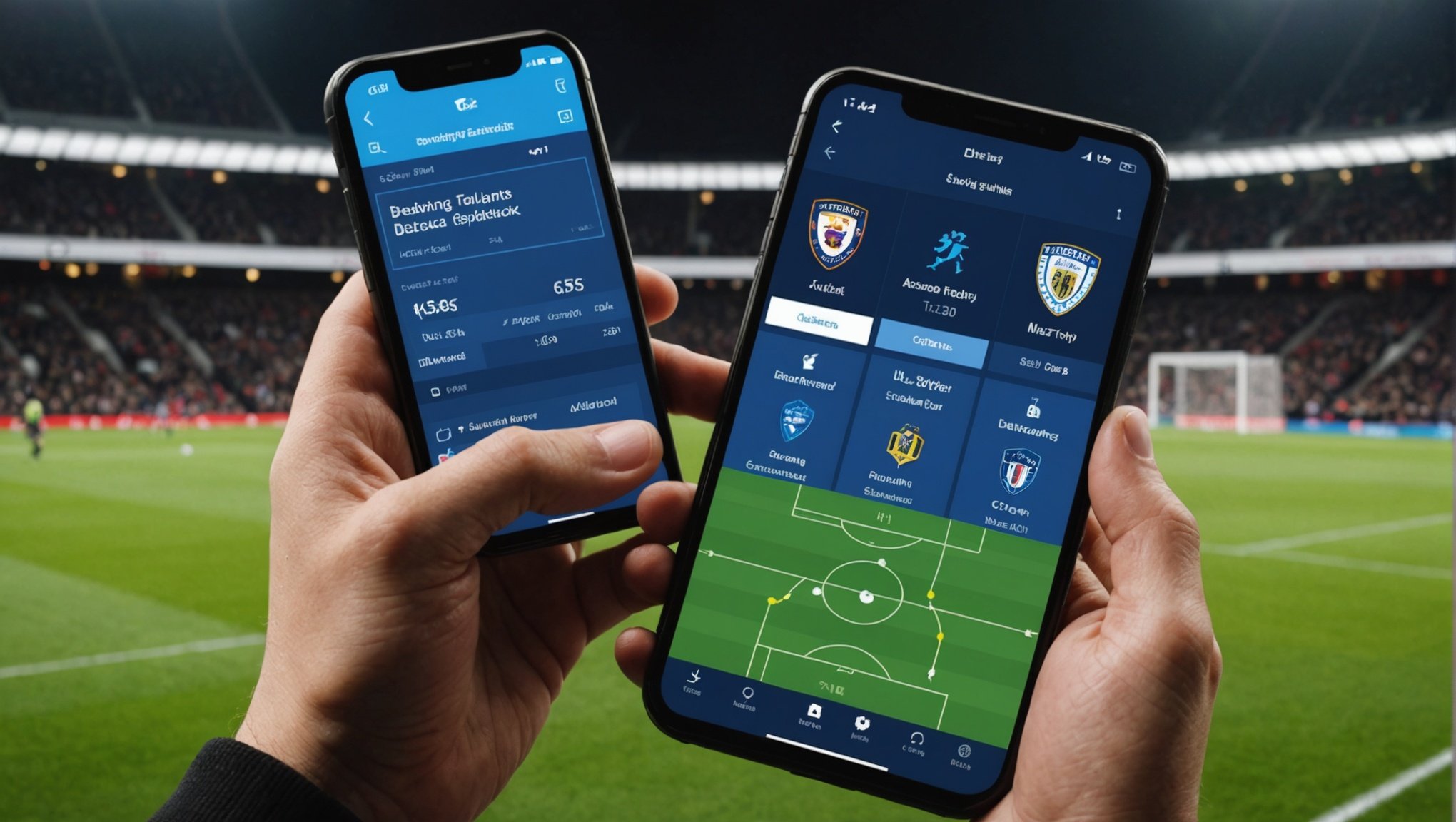Football scouting has evolved dramatically with the emergence of data analytics. Traditional methods no longer suffice in identifying hidden talent. Teams increasingly rely on detailed statistics and advanced algorithms to uncover the next football superstar. This shift not only optimises scouting efficiency but also transforms decision-making processes. Explore how data-driven insights can revolutionise talent acquisition, shaping the future of football clubs and their strategies.
Understanding Data Analytics in Football Scouting
Data analytics has revolutionised the way football scouting operates, offering a systematic approach to identifying talent. By leveraging vast quantities of data, scouts can make informed decisions about player recruitment and development. This process involves collecting and analysing various data points to evaluate a player's performance and potential.
In the same genre : Unlocking Victory: Enhancing Football Coaching Strategies with Game Theory Insights
The data analytics process in scouting encompasses several stages. Initially, data is gathered from numerous sources such as match statistics, player tracking systems, and video analysis. These data points provide insights into a player's performance metrics, including speed, passing accuracy, and defensive contributions.
Key metrics play a crucial role in player evaluation. Metrics such as expected goals (xG), assists, and defensive actions per game are commonly used to assess a player's impact on the field. Additionally, advanced analytics consider factors like player positioning and movement patterns, providing a comprehensive view of a player's capabilities.
Also to discover : Unlocking Tactical Mastery: Strategies for Football Players to Enhance Performance in UK Leagues
Data sources are equally important in the scouting process. Clubs often rely on specialised software and databases that compile detailed player profiles. These platforms aggregate information from various matches and leagues, enabling scouts to compare players across different contexts. By understanding and utilising data analytics, football clubs can enhance their talent identification strategies, ensuring they recruit players who align with their tactical and strategic goals.
Successful Case Studies of Data-Driven Scouting
In recent years, successful clubs have increasingly turned to data analytics to refine their scouting processes. Notable examples include FC Barcelona and Liverpool FC, both of whom have leveraged data-driven strategies to enhance their recruitment success. These clubs illustrate how integrating analytics into scouting can lead to transformative outcomes.
FC Barcelona's Analytical Approach
FC Barcelona has long been a pioneer in adopting innovative scouting techniques. By utilising comprehensive data analytics, they have been able to identify players who not only possess technical skills but also align with the club's unique playing style. This analytical approach has resulted in the recruitment of players who contribute significantly to the team's success on the field.
Liverpool FC's Data-Driven Success
Liverpool FC is another club that has embraced data analytics with remarkable results. Their use of analytics in scouting has led to the acquisition of key players who have bolstered the team's performance. By focusing on specific metrics and player attributes, Liverpool has managed to build a cohesive and competitive squad, demonstrating the impact of data-driven decisions on recruitment outcomes.
Lessons Learned from Data-Driven Scouting
The experiences of these successful clubs offer valuable insights for others looking to enhance their scouting strategies. Key lessons include the importance of aligning data analytics with club philosophy, the need for a robust data infrastructure, and the benefits of continuous evaluation and adaptation. By learning from these case studies, clubs can improve their talent identification processes and achieve greater recruitment success.
Methodologies in Data Analytics for Scouting
In the realm of football scouting, scouting methodologies have evolved significantly with the advent of data analytics. Clubs now employ a variety of player evaluation techniques to gain a competitive edge. These methodologies range from traditional observation to sophisticated performance analysis techniques.
Machine Learning in Scouting
One of the most transformative methodologies is the use of machine learning. This technology allows clubs to process vast datasets and identify patterns that might be invisible to the human eye. Machine learning models can predict a player's future performance by analysing historical data, such as match statistics and individual player metrics. This predictive capability is invaluable for clubs looking to invest in talent that will yield long-term benefits.
Integration of Analytics into Scouting Processes
Clubs integrate analytics into their scouting processes by combining data-driven insights with traditional scouting methods. This hybrid approach ensures that scouts do not solely rely on numbers but also consider qualitative factors, such as a player's attitude and adaptability. By blending these approaches, clubs can make more informed decisions, reducing the risks associated with player recruitment.
Traditional Scouting vs. Data-Driven Approaches
The comparison between traditional scouting and data-driven approaches highlights a shift in the industry. Traditional scouting relies heavily on the subjective judgement of scouts, who assess players based on experience and intuition. In contrast, data-driven scouting provides objective insights through performance analysis, offering a more comprehensive view of a player's capabilities. While traditional methods remain valuable, the integration of analytics enhances the accuracy and reliability of player evaluations, leading to more strategic recruitment decisions.
The Impact of Data Analytics on Recruitment Decisions
Data analytics has profoundly influenced recruitment decisions in football, reshaping how clubs evaluate and select players. By providing a data-driven perspective, analytics enable clubs to assess player performance with greater precision and objectivity. This shift has transformed the traditional scouting landscape, allowing clubs to make more informed and strategic recruitment choices.
Influence on Player Selection and Contracts
Analytics play a crucial role in player selection by highlighting key performance metrics that align with a club's tactical needs. Clubs can identify players who excel in specific areas, such as passing accuracy or defensive contributions, ensuring that new recruits fit seamlessly into the team's existing structure. Moreover, data insights can inform contract negotiations by offering a clear understanding of a player's potential and market value, leading to more strategic recruitment decisions.
Successful Signings Based on Data Insights
Several clubs have achieved remarkable success through data-driven signings. For instance, Leicester City's acquisition of N'Golo Kanté was heavily informed by analytics, focusing on his exceptional defensive skills and work rate. Similarly, Brentford FC's data-centric approach has led to the discovery of undervalued talent, contributing significantly to their competitive standing. These examples underscore the transformative potential of analytics in recruitment.
Challenges and Limitations
Despite its benefits, relying solely on data for recruitment poses challenges. Data may not capture qualitative aspects such as a player's adaptability or leadership qualities, which are crucial for team cohesion. Additionally, overemphasis on statistics can lead to overlooking players with unique skills that defy conventional metrics. Hence, while analytics enhance recruitment accuracy, a balanced approach that incorporates traditional scouting insights remains essential.
Future Trends in Data Analytics and Scouting
The landscape of football scouting is undergoing a significant transformation, driven by emerging technologies. As clubs seek to gain a competitive edge, the integration of advanced tools such as artificial intelligence (AI) and wearables is becoming increasingly prevalent. These technologies are set to redefine talent identification and enhance the precision of scouting processes.
Emerging Technologies in Scouting
AI is at the forefront of this evolution, offering capabilities that extend beyond traditional data analysis. By processing vast amounts of data, AI can identify patterns and predict player performance with remarkable accuracy. This technology enables scouts to uncover hidden talents and make data-driven decisions with greater confidence. Additionally, wearables provide real-time insights into a player's physical condition and performance metrics during training and matches. These devices track parameters such as heart rate, distance covered, and fatigue levels, offering a comprehensive view of a player's fitness and potential.
Predictions for Talent Identification
Looking ahead, the future of talent identification in football is poised for further innovation. As technology continues to advance, scouts will increasingly rely on data analytics to uncover promising players. The use of virtual reality (VR) simulations is anticipated to become more widespread, allowing scouts to observe players in virtual environments and assess their skills in various scenarios. Moreover, the integration of blockchain technology could enhance transparency and security in player transactions, ensuring fair and accurate assessments of player value.
The Evolving Role of Scouts
In this data-driven landscape, the role of scouts is also evolving. While traditional scouting skills remain valuable, scouts are now required to possess a deeper understanding of data analytics and technology. This shift necessitates continuous learning and adaptation, as scouts must interpret complex data sets and collaborate with data analysts to make informed recruitment decisions. As a result, the modern scout is a hybrid professional, blending expertise in player evaluation with a keen awareness of technological advancements.













